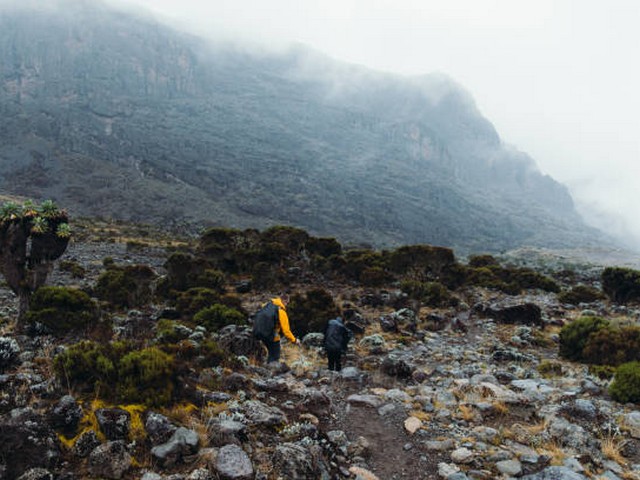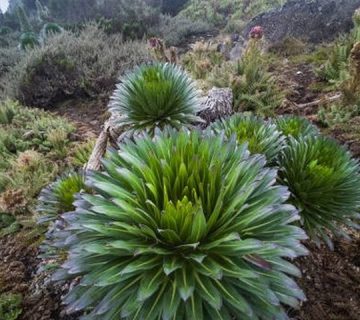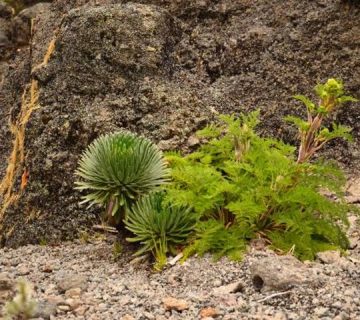How To Tell A Story Through Kilimanjaro Photography
At the Kilimanjaro Centre for Trekking and Ecotourism (KCTE), we believe that every ascent up the mighty Kilimanjaro is not just a journey through physical terrain, but also a narrative waiting to be captured. Mount Kilimanjaro, Africa's rooftop, offers more than just trails and summits; it presents a canvas where the art of photography can narrate a profound story of adventure, beauty, and personal transformation. Through this blog, let's unfold the layers of how you can tell your own unique story through Kilimanjaro photography.
The Essence of Storytelling in Photography
Photography on Kilimanjaro is not merely about snapping shots of high peaks and sunrises. It's about capturing moments that tell a story — your story. Each picture should reflect a fragment of your journey, a piece of the vast, untamed beauty of nature, and the spirit of perseverance that Kilimanjaro inspires. Here, each frame is a verse in a larger poem written by the winds, sung by the wilderness, and cherished by those who dare to trek the heights.
Preparing for Your Photographic Expedition
Choosing the Right Equipment
To tell a compelling story through your lens, you need the right tools. A lightweight, durable camera that performs well in different lighting conditions is ideal. Consider weather-sealed DSLR or mirrorless cameras for their resilience. Lenses are equally important; a good range might include a wide-angle lens for landscapes, a decent zoom for wildlife, and a fast prime lens for vivid portraits and detailed shots.
Understanding the Light
Light on Kilimanjaro changes dramatically, from the soft hues of dawn to the harsh midday sun and back to the golden glow of dusk. Learning to work with these light conditions will help you capture the mountain's many moods. The golden hours after sunrise and before sunset are particularly magical times for photography.
Framing Kilimanjaro's Landscapes
The Grand Vistas
Start with the grand landscapes. Kilimanjaro's environment offers a diverse palette—from the lush rainforests at Marangu to the stark, moon-like terrains of the Saddle. Wide-angle shots that capture the scope of these landscapes tell a story of scale and the diversity of this majestic mountain.
Intimate Details
While the sweeping vistas are breathtaking, the smaller details can be equally narrative. The texture of volcanic rocks, the frost on alpine plants, or the intricate patterns of the ice formations at the summit—these details offer a more intimate glimpse into Kilimanjaro's character.
Capturing the Human Element
Portraits of Resilience
The climbers, porters, and guides, each face tells a story of endeavor and endurance. Candid portraits or planned poses against the backdrop of the mountain can add a rich layer to your photographic tale. These photos not only bring human emotion into your story but also highlight the cultural diversity and the communal spirit of climbing Kilimanjaro.
Documenting the Journey
Capture the essence of the trek. Photographs of hikers trudging up challenging trails, setting up camps under starlit skies, or sharing a meal give viewers real insight into the Kilimanjaro trekking experience.
Wildlife and Flora on Kilimanjaro
Kilimanjaro is not just about landscapes and people; it's also home to unique wildlife and exotic plants. From the blue monkeys in the forest zones to the lobelias in the alpine desert, your camera can capture the biodiversity that thrives at different altitudes on the mountain. These elements are essential chapters of your Kilimanjaro story.
Ethical Photography Practices
While pursuing the perfect shot, it's vital to respect the natural environment and the local communities. Keep to marked trails to avoid damaging flora, refrain from feeding or disturbing wildlife, and always seek permission before photographing local people.
Join Kilimanjaro Centre For Trekking and Ecotourism (KCTE)
Ready to embark on your photographic journey up Kilimanjaro? Join us at Kilimanjaro Centre for Trekking and Ecotourism (KCTE). We not only provide guided climbs but also ensure that you capture the essence of Kilimanjaro with every shot you take. Our expert guides are familiar with the most photogenic spots and the best times to visit them, ensuring your story is beautifully told.
FAQs about Kilimanjaro Photography
Q1: What is the best time of year for photography on Kilimanjaro?
The dry seasons, from late June to October and from late December to early March, offer clearer skies and more predictable weather for photography.
Q2: Do I need special permission to use a drone for aerial shots?
Yes, drone use is regulated in Tanzania, and you need to obtain permission from the Tanzania Civil Aviation Authority before using one on Kilimanjaro.
Q3: How can I ensure my camera's batteries last in the cold conditions at high altitudes?
Keep spare batteries in close contact with your body inside your jacket to keep them warm, and only load them into your camera when you're ready to shoot.
Conclusion
Photographing Kilimanjaro is about more than just capturing images; it's about telling a story that resonates with the awe and challenge of the climb. Each photo you take is a testament to nature's grandeur and human tenacity. Kilimanjaro offers a narrative of beauty, adventure, and personal conquest, and through your lens, you can share this story with the world.
Are you ready to create and narrate your Kilimanjaro saga? Book your climb with Kilimanjaro Centre for Trekking and Ecotourism (KCTE) today, and let's make sure your Kilimanjaro story is one worth telling—and worth viewing—through the compelling art of photography. Whether you are a seasoned photographer or a passionate beginner, Kilimanjaro is your canvas, waiting for you to bring it to life.




